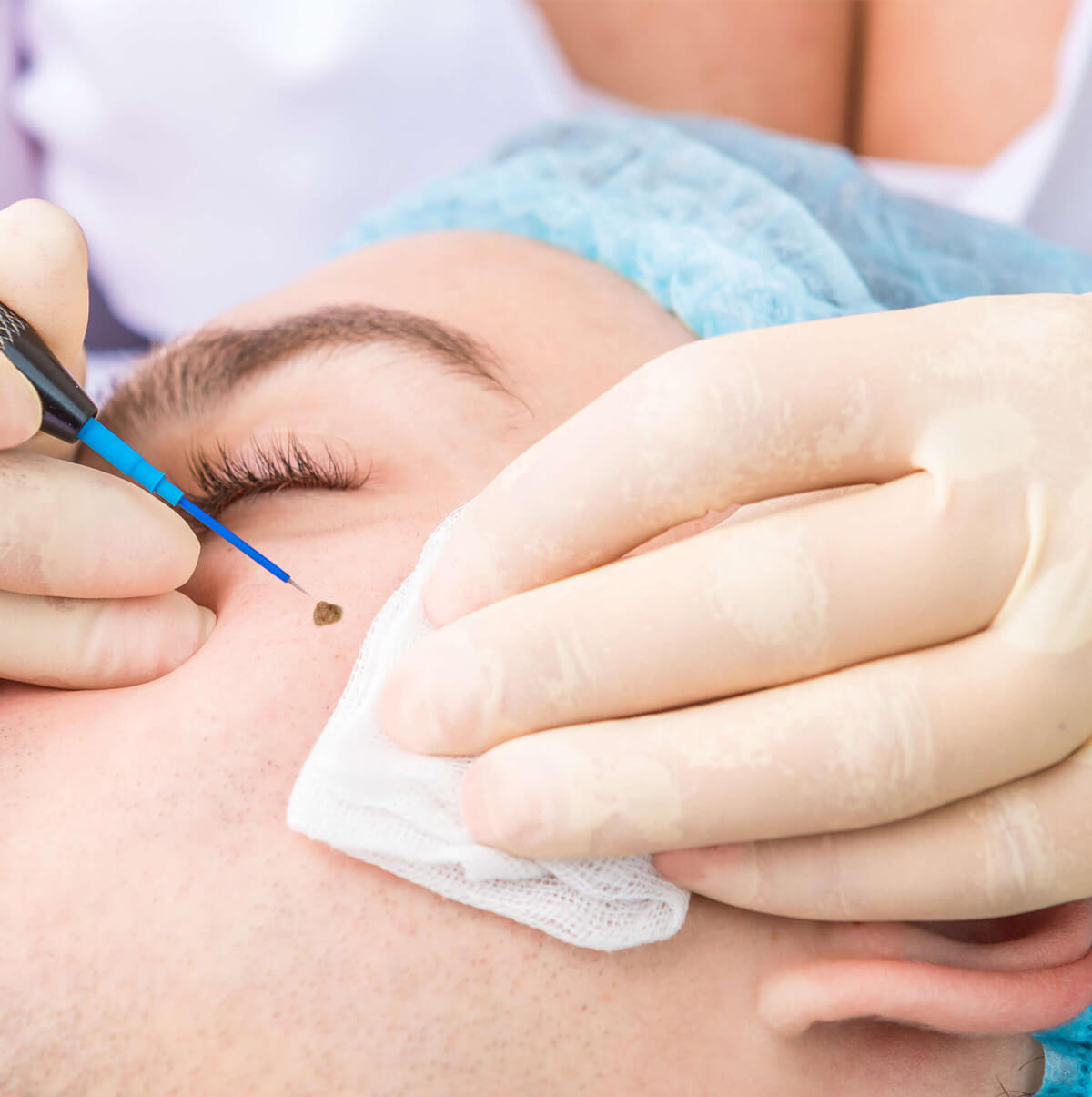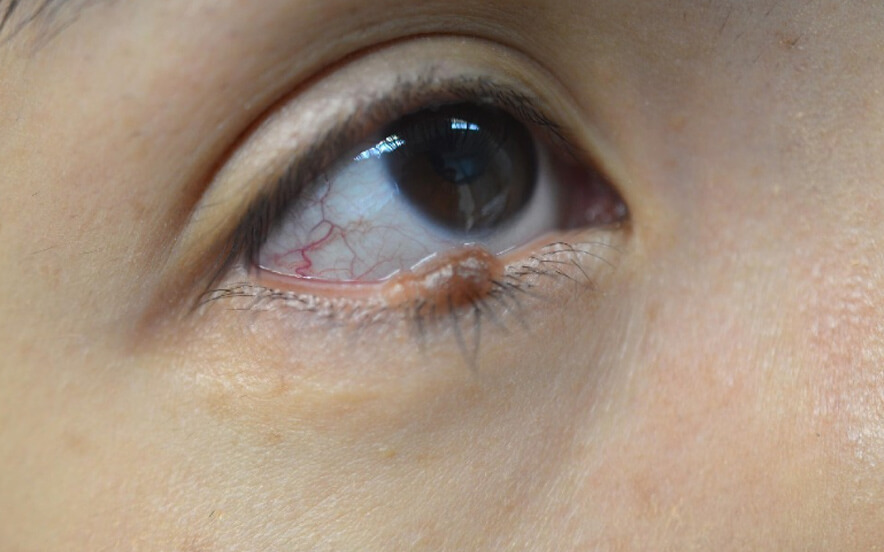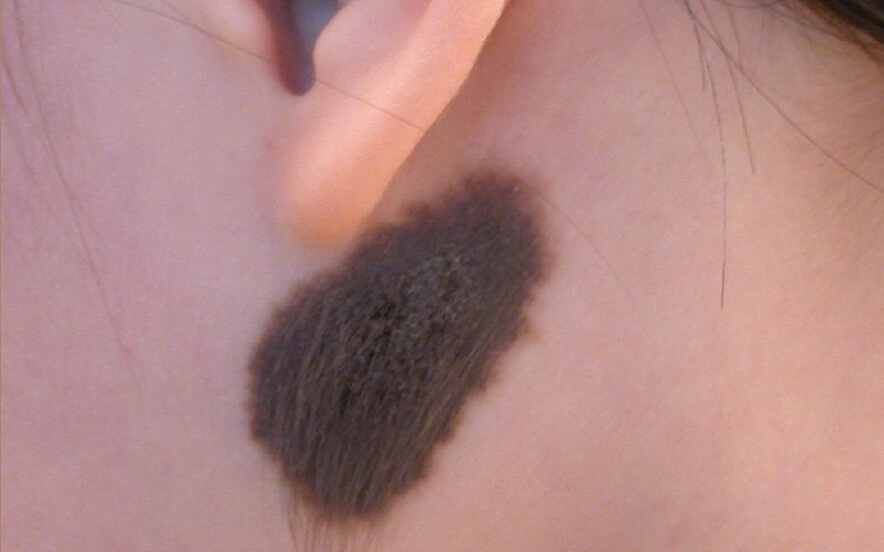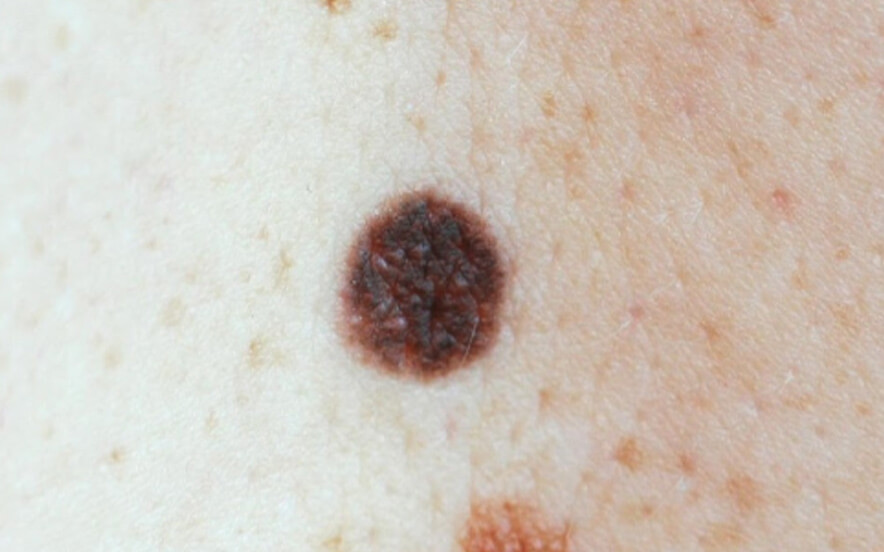Mole Removal
A mole commonly appears as a small-pigmented spot on the skin. When a mole is atypical and cancerous looking, it is best to surgically excise the suspicious moles for laboratory analysis.

What you need to know about Moles and Mole removal
Can Moles be prevented?
This is the most common question asked during consultation! The answer is “no”. Moles cannot be prevented. Some are congenital and present at birth while most are acquired and appear later in life.
What can I expect with regard to normal moles?
Most acquired moles are benign growths. They typically start to appear during early childhood, in response to sun exposure. However, genetic factors are clearly involved in the formation of moles. Usually a mole will get bigger and the number of moles will also increase over time.
After care and cosmetic outcome of mole removal
After mole removal, antiseptic cream will be given to prevent wound infection. Patients can shower or cleanse the wound with water or normal saline, gently patting it dry, before applying the antiseptic cream. 3-7 days of scabbing can be expected and thereafter, a pink to red spot will follow for a while before returning to normal skin color.
The cosmetic outcome is generally good, especially when the mole is small and shallow. A slight dent is possible if the mole is a bigger and deeper lesion. Recurrence of the mole is also possible and repeat treatment may be necessary at times. A review 1-2 months later to follow up on the healing and recurrence may be necessary.
How can I remove my Moles?
Many people remove moles for cosmetic or Feng Shui reasons. For cosmetic reasons, smaller moles can easily be removed by electrosurgery or CO2 laser surgery.
Electrosurgery uses radio-frequency instruments to burn the moles. Similarly, CO2 laser removes moles with high powered laser beams and burns them into vapour (aka vapourization). Dr Wong’s default choice for mole removal is electrosurgery because it gives better precision and control and it is also more affordable. However, if you prefer laser removal, Dr Wong can do it too! Bigger moles are best removed by surgical excision.
When a mole is atypical and cancerous looking, it is best to surgically excise the suspicious moles for laboratory analysis. For details of skin cancer and skin cancer surgery, do consult a dermatologist to have a proper clinical evaluation if you intend to have your moles removed. It will be disastrous if some untrained personnel remove your cancerous moles inadvertently and improperly.
Useful Link : What you need to know about mole removal!
Make an Enquiry
Got questions? Fill up this form and our clinic staff will revert as soon as possible.
For faster response, call us at +65 6694 1121
Chat with our friendly clinic staff through Whatsapp!
Visit Us
Start your skin health restoration journey with us today!
Assurance Skin, Laser & Aesthetics
Mount Elizabeth Novena Specialist Centre
#10-22/23, 38 Irrawaddy Road ,
Singapore 329563
Mon, Tues, Wed, Fri: 9.00am-5.00pm;
Thurs, Sat: 9.00am-12.30pm;
Sun & Public Holidays: Closed
Dr. Wong Soon Tee
Consultant Dermatologist

Dr. Wong Soon Tee
Consultant Dermatologist
Care and Professionalism Refined by
Over 30 Years of Dermatology Experience
- MBBS, Yong Loo Lin School of Medicine, Singapore
- MRCP. Member of Royal College of Physicians, United Kingdom
- FAMS, Fellow of Academy of Medicine, Singapore
- Adjunct Assistant Professor, National University of Singapore
- Visiting Consultant, University Dermatology Division, National University Hospital
- Visiting Consultant, Aesthetic Plastic Surgery Centre, National University Hospital
Why Choose Us
-
Dr Wong connects well with his patients & he is a specialist with over 30 years of experience.
-
Our specialist listens & explains well to his patients on their skin issues and their queries.
-
We offer carefully curated FDA & HSA-approved treatments that give effective results.
-
Full financial counselling & adherence to MOH guidelines on the surgical fee.




